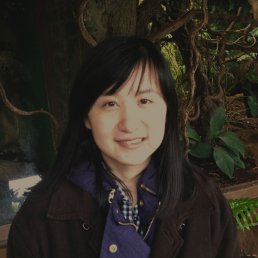A Simple Generative Model of Collective Online Behavior (Mason Porter)
Human activities increasingly take place in online environments, providing novel opportunities for relating individual behaviors to population-level outcomes. In this paper, we introduce a simple generative model for the collective behavior of millions of social networking site users who are deciding between different software applications. Our model incorporates two distinct mechanisms: one is associated with recent decisions of users, and the other reflects the cumulative popularity of each application. Importantly, although various combinations of the two mechanisms yield long-time behav- ior that is consistent with data, the only models that reproduce the observed temporal dynamics are those that strongly emphasize the recent popularity of applications over their cumulative popularity.
This demonstrates --- even when using purely observational data with- out experimental design --- that temporal data-driven modeling can effectively distinguish between competing microscopic mechanisms, allowing us to uncover previously unidentified aspects of collective online behavior.
---
Bubbles, Turing machines, and possible routes to Navier-Stokes blow-up (Robert van Gorder)
Navier-Stokes existence and regularity in three spatial dimensions for an incompressible fluid... is hard. Indeed, while the original equations date back to the 1840's, existence and regularity remains an open problem and is one of the six remaining Millennium Prize Problems in mathematics that were stated by the Clay Mathematics Institute in 2000. Despite the difficulty, a resolution to this problem may say little about real-world fluids, as many real fluid problems do not seem to blow-up, anyway.
In this talk, we shall briefly outline the mathematical problem, although our focus shall be on the negative direction; in particular, we focus on the possibility of blow-up solutions. We show that many existing blow-up solutions require infinite energy initially, which is unreasonable. Therefore, obtaining a blow-up solution that starts out with nice properties such as bounded energy on three dimensional Euclidean space is rather challenging. However, if we modify the problem, there are some results. We survey recent results on averaged Navier-Stokes equations and compressible Navier-Stokes equations, and this will take us anywhere from bubbles to fluid Turing machines. We discuss how such results might give insight into the loss of regularity in the incompressible case (or, insight into how hard it might be to loose regularity of solutions when starting with finite energy in the incompressible case), before philosophizing about whether mathematical blow-up solutions could ever be physically relevant.



